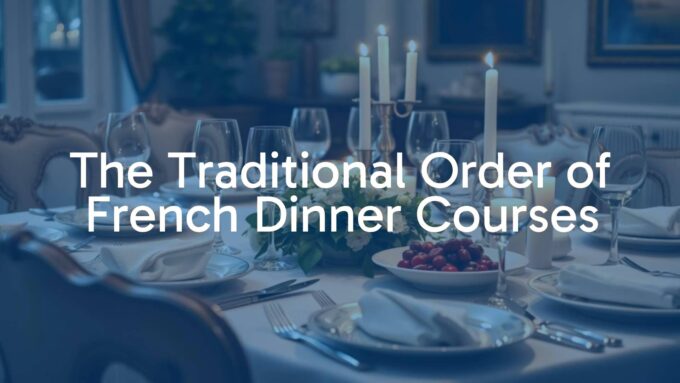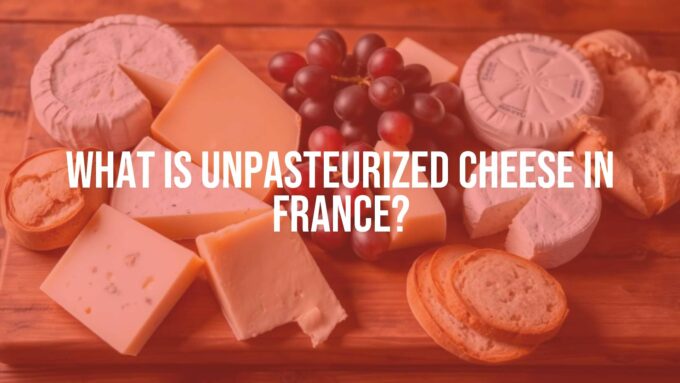Visiting a French market is more than just buying food-it’s a lively part of French culture where the sights, sounds, and smells come together for a memorable experience. Here, people chat, fresh produce and cheeses fill the air with tempting smells, and every stall offers something new to try. French markets are a core part of local life and a weekly habit for many. This guide will help you get the most out of these exciting places and shop with confidence, even if it’s your first time.
From busy outdoor setups to cozy indoor halls, every French market shows you a different side of daily life in France. Knowing how they work and what’s on offer can turn a simple shopping trip into a highlight of your visit. Here’s how to enjoy shopping at a French market like the locals do.

What Is a French Market?
A French market-“le marché” to locals-is where sellers and growers bring their goods right to the community. Unlike bright, organized supermarkets, these markets are lively, noisy, and based on old traditions. Markets have played a big part in French life since the Middle Ages, not just as places to shop, but as gathering spots for neighbors and friends.
French markets focus on what’s in season, grown nearby, and made by hand. You’ll only see strawberries when they’re truly in season, and the selection changes as the year goes by. Besides food, many markets also sell flowers, clothing, antiques, and handmade crafts-all showing the skills and culture of the region.
Types of French Markets
- Food Markets: The most common, with fresh fruits, vegetables, cheese, meat, and bread. Large cities may have daily markets, while small towns often hold them once a week.
- Flea Markets (Marchés aux Puces): These focus on antiques, vintage clothes, old books, and various used items, like Les Puces de Saint-Ouen near Paris, one of the world’s largest.
- Specialty Markets: Some towns have markets that focus on certain products, like fish in Marseille or truffles in Carpentras. Flower markets and craft fairs are also popular in different areas.
How Are French Markets Different from Supermarkets?
French markets are very different from supermarkets (such as Monoprix or Carrefour). Markets sell products that were often harvested just hours earlier, so freshness and taste are top-notch. Market sellers are usually the people who actually grow or make the items, so they know a lot about what they’re selling and are happy to give advice.
Markets only sell what’s in season and made nearby, which means better taste and support for local growers. Supermarkets, on the other hand, stock the same items all year round-often shipped from far away-so they lack the freshness, and the experience is not as personal or interesting.

Why Shop at a French Market?
Shopping at a French market isn’t just about getting groceries-it’s a way to enjoy life the way the French do. For locals, it’s a regular chance to catch up with friends and stick to old habits. For visitors, it’s a special way to taste the real flavors of a region and learn about the food and people.
You get outstanding quality, a wide range of foods, and a close look at French traditions. Good market produce often costs a little more than supermarket goods, but the quality and taste make it worth it.
Main Advantages
- Freshness: Much of what you find comes right from the farm or producer that same morning.
- Community: Markets are social places. Vendors may remember you, give recommendations, or share recipes.
- Support Local: Buying at markets helps small farms and family businesses in the area.
The Value of Seasonal and Regional Products
- Markets only sell what’s in season, so you get foods at their best taste and nutrition.
- Each area has its own special products-like lavender and olives in Provence, apple and cheese in Normandy, or crepes in Brittany-so you can taste what’s special about each place.
How to Get Ready for a Market Visit
To get the most from a market visit, a bit of planning goes a long way. Think about what you need and when you should go. French people have some habits when shopping, and following their example can make your trip smoother and more fun.
- Are you looking for the biggest selection, the freshest items, or the lowest prices? This will affect what time you should go.
- Bring what you need so carrying your purchases is easy and you don’t run out of money partway through a buy.
Best Times to Go
| Goal | When to Go |
|---|---|
| Best selection and freshness | Arrive early, around 8:30 or 9:00 AM |
| Discounts/last-minute deals | Visit near closing time, after 12:30 PM (but expect less choice) |
- Most markets open early, around 7 or 8 AM, and close by 1 or 2 PM.
- Avoid Mondays, as many markets and stalls take the day off.
What to Bring
- Bags: Bring your own reusable bag or market basket (“panier”), since plastic bags are usually not provided.
- Cart: For bigger shopping trips, locals use wheeled carts (“trolleys”).
- Cash: Many sellers only accept cash, especially in smaller or older markets. Have small bills and coins ready.

How to Shop at a French Market
Shopping at a French market follows certain unwritten rules. A little courtesy goes a long way, and understanding how things work will help you fit in.
- Watch how other shoppers move through the market and wait your turn at busy stalls.
- Politeness and patience are always appreciated.
Greeting Sellers and Market Manners
- Always greet vendors with “Bonjour, Monsieur/Madame.” Say “Merci” and “Au revoir” when you leave.
- Don’t touch the produce unless you are told it’s okay. Point to what you want, and the vendor will pick it for you.
- Respect any line, even if it’s informal. Don’t cut ahead of others.
Choosing and Buying Produce
- Let sellers choose your produce. They’ll ask when you plan to eat it so they can pick items at the right ripeness.
- Ask for suggestions-vendors are happy to help you find the right kind of cheese, meat, or vegetable for your meal.
- Don’t be shy about trying a free sample if one is offered, especially at cheese or sausage stalls.
Bargaining
Unlike in some countries, prices in French food markets are usually set and not open to bargaining. If you want to build a friendly connection with sellers, you can jokingly comment about prices, but don’t push for lower prices as a rule. Real bargaining is common only at flea markets (“marchés aux puces”).
Understanding Signs and Labels
- Most prices are written on bits of cardboard, sometimes by hand.
- Look for the origin of the produce. Sellers must show where the food was grown. If it isn’t shown, ask “C’est de la région?” (Is it local?).
- Be careful around stalls that look “too perfect,” especially in tourist-heavy areas, as these may overcharge or sell less authentic items.
Popular Things to Buy at French Markets
Markets have a wide variety of foods and other goods, and it’s easy to find something new and delicious or discover items you won’t see in supermarkets. Here are the top picks:
- Fruits & Vegetables: With the seasons changing, expect to see asparagus in spring, tomatoes and melons in summer, mushrooms and figs in fall, and citrus in winter. Everything is extra fresh and full of flavor.
- Cheese: Markets offer famous French cheeses-fresh, aged, soft, hard, and many from local farmers. Ask for a suggestion or sample.
- Bread & Pastries: Try rustic “pain de campagne,” soft brioche, or local pastries. Some stalls may sell hot croissants or fresh crepes for a quick snack.
- Cured Meats & Regional Foods: Look for dried sausages, pâtés, rillettes, olives, honey, and local jams. Some regions have special foods, like truffles or mushrooms, which may only be available in certain seasons.
- Antiques & Flea Market Items: Many bigger markets sell secondhand goods, antiques, linens, or pottery. These make great souvenirs.

Well-Known French Markets
There are countless markets all over France-every city and many towns have their own. Some are famous for their size, history, or regional specialties:
- Paris Markets:
- Marché Bastille: One of the biggest in Paris, best on Sundays.
- Marché d’Aligre: Loved for its longtime charm.
- Marché des Enfants Rouges: The city’s oldest covered market, in the Marais.
- Rue Mouffetard: Paris’s oldest market street.
- Marché Saxe-Breteuil: Beautiful location with an Eiffel Tower view.
- Other Regions:
- Saumur (Loire Valley): Known for mushrooms and local vegetables.
- Isle-sur-la-Sorgue (Provence): Big Sunday market, especially good in summer.
- Carpentras (Provence): Friday market famous for truffles in winter.
- Nice (Cours Saleya): Flower market every day, antiques on Mondays, food on other days.
- Marseille: Daily fish market and spice stalls.
- Perigueux (Dordogne): Known for foie gras and duck products.
- Historic Markets:
- Marché des Enfants Rouges: Paris’s oldest covered market, since 1615.
- Rue Mouffetard: Oldest market street in Paris.
- Strasbourg Christmas Market: World’s oldest and biggest Christmas market, held every December.
- Les Halles: Was the main Paris market for centuries (now replaced by Rungis wholesale market, not open to tourists).
Tips for Shopping Like the French
If you want to enjoy your market experience fully, act as the locals do. These tips can help:
Get to Know Your Vendors
- When you shop regularly, sellers get to know you-which can lead to extra items and top recommendations.
- Ask about their products, where they come from, and how to cook them. Simple questions show interest and often lead to friendly advice.
Do’s and Don’ts
- Do: Always greet vendors and say thank you. Bring your own bags and enough cash. Arrive early for best choice, and look through the market before buying.
- Don’t: Touch produce without permission. Don’t haggle over prices in food markets. Don’t cut in line or hunt for items out of season. Don’t ask for the best macarons-it’s a tourist cliché!
Enjoy the Atmosphere
- Take your time to explore. Listen to the conversations and enjoy the smells and sights.
- Try foods offered to you and talk to sellers (and other shoppers) if you’re learning French.
- A simple picnic with your finds-cheese, bread, fruit, sausage, maybe some local wine-makes for a true French moment.
French Market Shopping: Your Questions Answered
Here are answers to some questions visitors often have about shopping at French markets:
- Are French markets open every day? Most are open two or three mornings a week. Large cities have different markets on different days, but many markets and stalls are closed on Mondays. Most close by 1 or 2 PM.
- What special foods are found in French markets? Unique seasonal produce like wild garlic, small wild strawberries (“fraises des bois”), and unpasteurized cheeses straight from local farms. Some sellers also offer wild mushrooms, cured duck, or locally made charcuterie.
- Are markets cheaper than supermarkets? Not always. Sometimes market items cost a bit more, reflecting higher quality, freshness, and local sourcing. Most shoppers agree it’s worth the extra for top taste and a better experience.
- Can tourists shop and buy wine at markets? Yes! Tourists are welcome. Some food markets have local wine but the choices are usually limited. For more wine, visit a wine shop (“caviste”) or a supermarket.
- Should I go early or late? Go early for the freshest and widest selection, or late for possible discounts on leftovers (but with limited choice).












Leave a comment